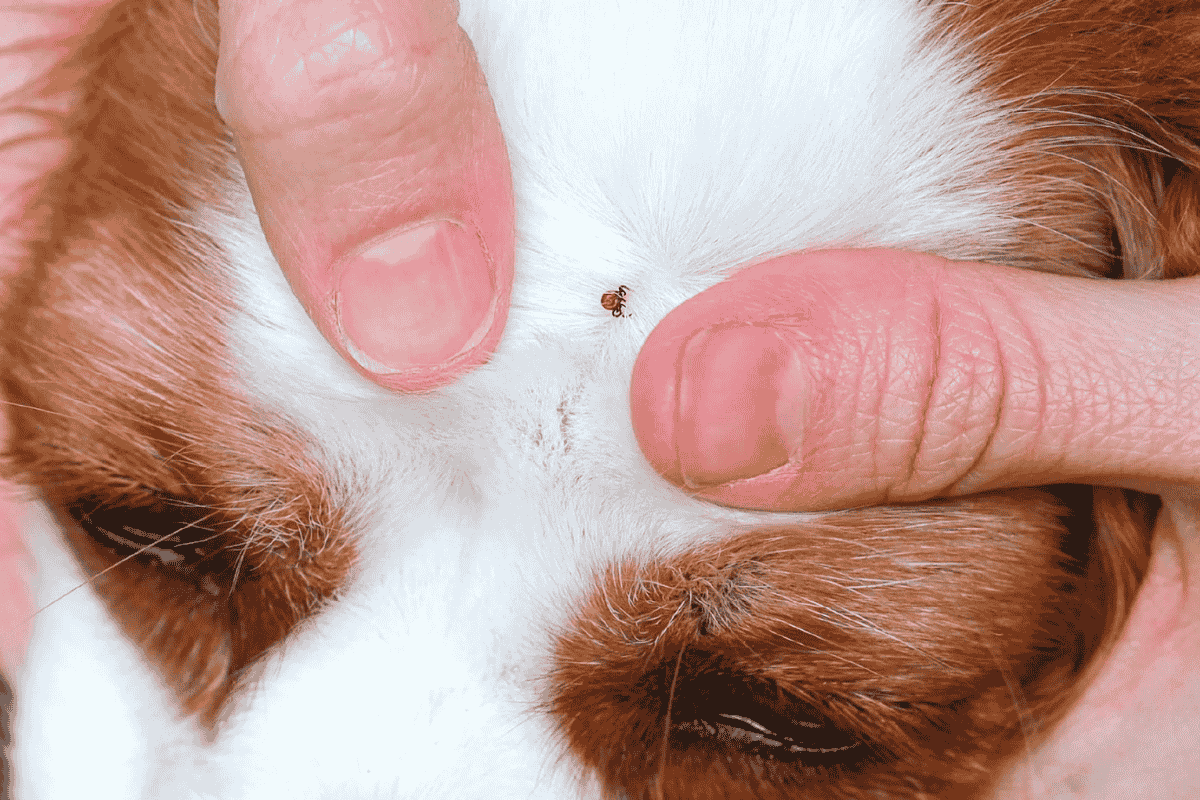Ticks are more than just pests—they can transmit serious diseases to dogs, such as Lyme disease, ehrlichiosis, anaplasmosis, and Rocky Mountain spotted fever. Because of this, checking your dog regularly for ticks is an essential part of their daily care, especially if they spend time outdoors.
Why You Should Check a Dog for Ticks
- Disease Transmission: Tick bites can spread bacterial infections that cause fever, swollen joints, limping, poor appetite, vomiting, or diarrhea. Some of these illnesses may flare up for life.
- Preventative Gaps: Even dogs on flea and tick preventatives can still be bitten, as ticks may transmit disease before dying.
- Resistance Risk: Some ticks may be resistant to preventatives, making frequent checks critical.
- Bite Infections: Tick bite wounds can become infected with bacteria or yeast, even without disease transmission.
What Do Ticks Look Like?
- Larvae: Very small, six-legged, hard to spot.
- Nymphs: Slightly larger, with eight legs, still tiny and difficult to see.
- Adults: Oval-shaped, with eight legs. They range in shades of brown, black, or tan. After feeding, their bodies become pale and swollen, sometimes obscuring their legs.
How To Check a Dog for Ticks
- Initial Scan: Run your hands over your dog’s body, feeling for bumps. Part the fur if you find anything unusual.
- Use a Flea Comb: Tools like the Safari Flea Comb help part fur and detect bumps, though they won’t remove ticks.
- Check Key Areas:
- Inner and outer ears
- Between the toes
- Around eyelids
- Under the tail
- Underarms and groin
- Skin folds and tight corners
- Beneath collars and harnesses
Ticks love warm, hidden spots, so be thorough in your check.
How To Remove a Tick From a Dog
- Disinfect Tools First: Use tweezers or a tick remover (like the ZenPet Tick Tornado).
- With Tweezers: Grip the tick close to the skin and pull straight out slowly and steadily.
- With Tick Tornado: Slide the notch under the tick, then pull straight out.
- Do Not Twist: Twisting may leave the tick’s head in the skin, which can cause infection.
- If the Head Breaks Off: Contact your veterinarian—they may need to remove it and prescribe medication.
- Clean the Site: Use a disinfecting spray, such as Vetericyn Plus Antimicrobial Wound Care Spray.
- Save the Tick: Store it in a sealed container to show your vet if your dog develops illness.
Be Consistent With Tick Checks
- Daily: Check your dog after every outdoor adventure in grassy, wooded, or brushy areas.
- Seasonal Risks: Ticks become active anytime temperatures rise above 32°F for more than 24 hours.
- Low-Risk Areas: In colder climates with regular freezes, weekly checks may be enough.
Remember, tick checks are just one part of prevention. Year-round flea and tick medications—oral or topical—are essential, and your veterinarian can help you choose the right option for your dog.












